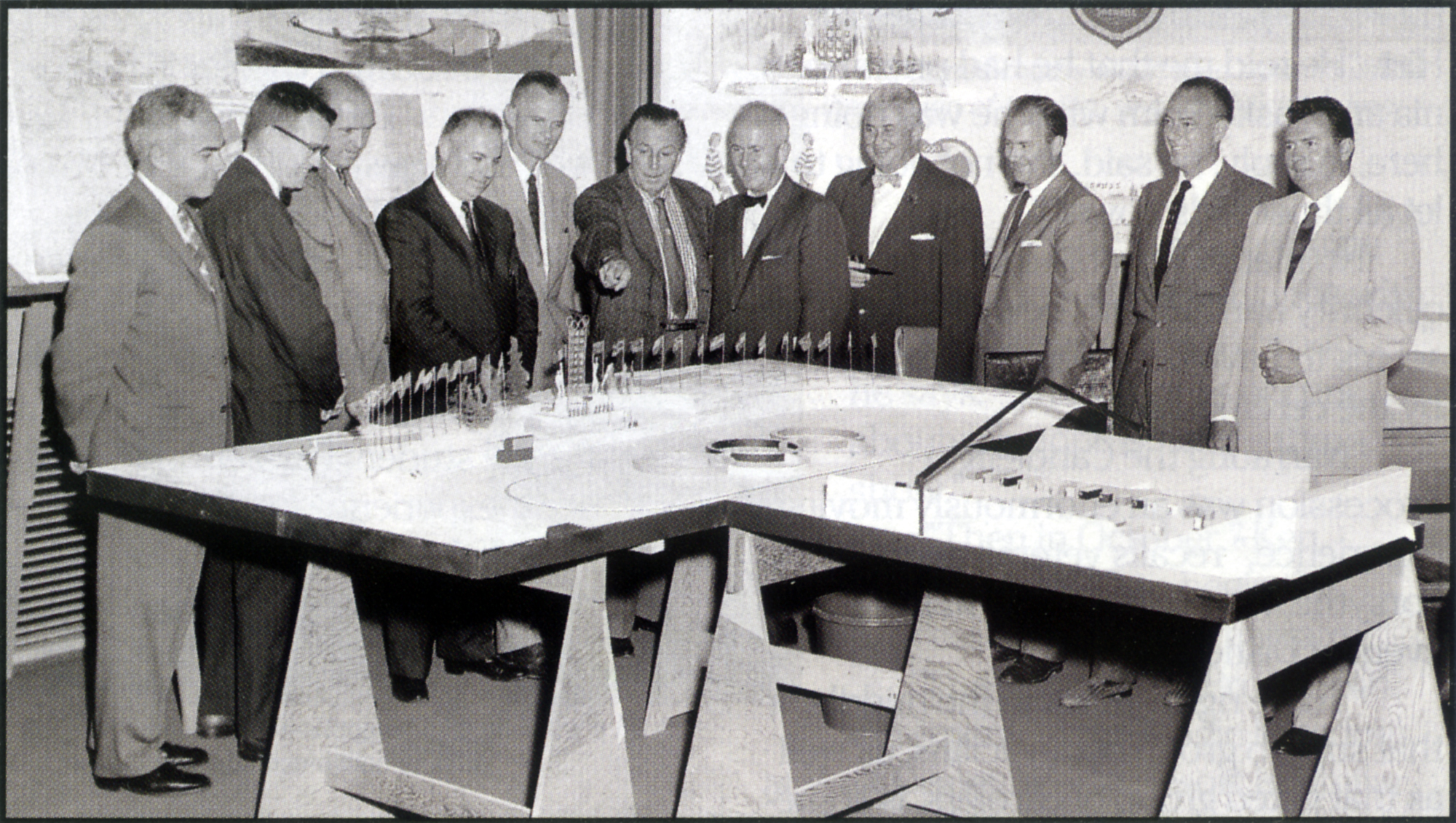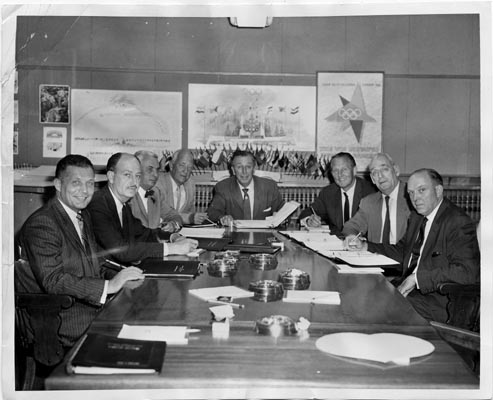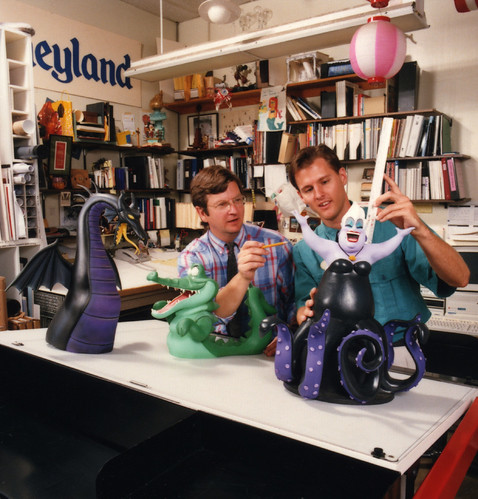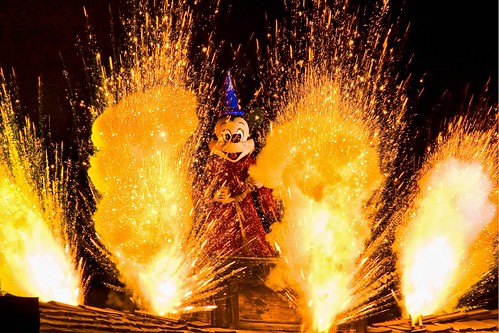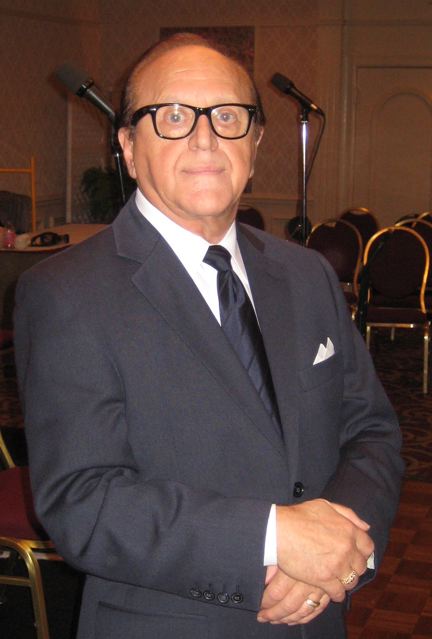It is, in a word, "FANTASMIC!"
FANTASMIC! is the uncommon title for a most uncommon Disneyland experience scheduled for a spring debut: part magic show, part high-energy musical theater, and a large part special effects display featuring lights, lasers and fireworks. This combination is what led to the selection of that uncommon name.
FANTASMIC! incorporates properties of fantasy, "Fantasia," and phantasmagoria, defined by Webster as "1. an early type of magic-lantern show consisting of various optical illusions in which objects rapidly change size, blend into one another, etc.; 2. a rapidly changing series of things seen or imagined, as the figures or events of a dream."
It all takes place on Tom Sawyer Island, long after dark, when guests have departed and the Island is empty or is it? Guests gathered along the Riverfront suddenly notice lights emanating from the deserted Island. There, in the midst of blazing color, appears Mickey as the Sorcerer's Apprentice, dreaming up images from 60 years of Disney animation. And then the fun — or is it terror? — begins.
Every bit as much care and attention to detail has gone into this entertainment spectacle as is put into any new Theme Park attraction.
"Disneyland is made up of a variety of experiences," explains Bob McTyre, Vice President of Entertainment at Disneyland, "attractions, food, merchandise, characters, live entertainment. We try to make the whole work together.
"As part of that effort, we were looking at ways to make nighttime at Disneyland a more exciting place to be. And we were most interested in New Orleans Square. Although we have done shows on the River in the past, a real show
experience had never been done there."
Creating the environment for the presentation of FANTASMIC! required months of construction, not to mention the temporary draining of The Rivers of America, the drydocking of the
Mark Twain Riverboat and the
Sailing Ship "Columbia," and some extensive overhauling of Tom Sawyer Island.
When the dust cleared, the reconstructed Island, the refilled River, and the restored River traffic all looked much the same as they did before...by day that is.
That's just one of FANTASMIC!'s many illusions. By night, FANTASMIC! transforms the River into something wonderful...and sometimes sinister.
Creating the show that will come to life in this new environment actually took years.
"We had been wanting to do a spectacle on the River for at least 10 years," says Mike Davis, Director of Entertainment at Disneyland. "When we saw 'IllumiNations' at Walt Disney World we started thinking about it again. Then, last year, Michael (Eisner, The Walt Disney Company Chairman and CEO) gave us the go-ahead to try something new, so we said, 'Let's finally do that River spectacular."'
Through the high-tech sorcery of FANTASMIC!, Mickey Mouse draws the audience into a world of his own vivid and colorful imagination.
Of course, Mickey has more than 60 years of spectacular memories stored up, so it should come as no surprise that, once he turns his imagination loose, he can conjure up a sensational array of images — enormous blooming flowers, giant dancing marionettes, swashbuckling "Peter Pan" pirates (aboard a full-scale pirate ship), and exotic "Jungle Book" beasts, including a gigantic Kaa, which slithers its 100-foot-long body around the tip of Tom Sawyer Island.
There are some malevolent forces at work in FANTASMIC! however. A formidable array of Disney villains invades Mickey's imagination for a thrilling climax, pitting Mickey against the likes of the Wicked Queen from "Snow White," the demon Chernabog from "Fantasia," Ursula the Sea Witch from "The Little Mermaid," and the towering, fire-breathing dragon from "Sleeping Beauty." It takes all the goodness Mickey can muster to end the nightmare and return Disneyland to its normal state as The Happiest Place on Earth.
In addition to a cast of nearly 50 live performers in hundreds of costumes and a variety of roles, FANTASMIC! features lasers, fog effects, specially choreographed water fountains, fireworks, fiber-optics technology and a full cast of creeping, floating, fire-breathing and generally intimidating monsters.
One innovative technique employed by FANTASMIC! has never before been seen in a Disney Theme Park. As Mickey works his magic, three massive mist screens, each one 50 feet wide, 30 feet high and 6 inches thick, will appear on the River alongside Tom Sawyer Island. These screens are so dense that actual film images can be projected upon them.
Show Director Barnette Ricci says that the research into entertainment special effects technology dates back to 1989 when Disneyland was preparing to celebrate its 35th Anniversary. "I had an idea for an anniversary show at the Castle that would take special effects techniques like lasers and mist screens and combine them with live performers," Ricci recalls, "so there was a lot of research done on the different technologies available.
"Of course, the 35th Anniversary show never came to fruition," she says, "but maybe that was fate. Because then we were given this opportunity to do something
really unique, on the River, a spectacle of spectacles!"
The key, Ricci remembers, was the discovery of the new water-screen technology.
"We had already gleaned all this information about mist screens on which we could project light beams and lasers. Then we received a demo reel from a French company. It showed a water screen with the
film projected on it.
"Seeing it made the whole show just fall into place," she recalls. "What if Disney animation was projected on to those screens? It would be incredible!"
While Ricci was creating a script which incorporated the full range of characters and creatures that could emerge from Mickey's imagination, she and others were also finding ways to present these beings in unique, sometimes startling ways.
Some of the chief illusions of FANTASMIC! are created using specially prepared versions of scenes from classic Disney animated films, images which seem to appear in the air above the River as they interact with the live performers. The action is punctuated by an array of special effects and by Bruce Healey's dramatic orchestral score.
This was not as simple as might first appear. Familiar film footage could not just be "plugged into" the presentation. It had to be cleverly adapted, reedited under Ricci's supervision, and re-scored by Healey.
"The challenge," Healey notes, "was to reflect all of the different emotions and attitudes in the show."
In response to that challenge, he created something akin to a full-scale movie score. It includes original themes which explore the whimsical and romantic aspects of Mickey's imagination, and others which provide heroic emphasis for the action highlights.
Healey also did fresh orchestrations of existing music — ranging from "Night on Bald Mountain" to "Someday My Prince Will Come" to "Pink Elephants on Parade."
While Healey was occupied with what the audience would hear, others were helping to create the things the audience would see. While many of the characters seen in FANTASMIC! may look familiar, costume designer Marilyn Sotto points out that the costumes needed an extra dose of Disney "sparkle" because of the darkness and distance from the audience. Mickey and his friends also needed something their outfits don't require on Main Street, U.S.A. — waterproof lining!
A few costumes include fiber-optic illumination. Many had to be designed for quick changes — from "Jungle Book" monkey to "Peter Pan" pirate, for example. And then there was the challenge of creating a costume that enables a performer to impersonate one of the fanciful, flexible pink elephants from Dumbo's dream.
Ask art director Tom Butsch what he's been doing for the past year and he'll tell you about giant flower petals, a hundred-foot-long snake "with search-light eyes," a giant crocodile and a villainess to whom he refers as "the 20-foot tall floating Ursula creature."
The most spectacular effect on which Butsch and Co. have had to work is the one which climaxes the villains' invasion of Mickey's imagination. Maleficent, the "Sleeping Beauty" sorceress, is transformed into a 40-foot dragon, breathing fire which literally ignites the surface of the River.
"We've been designing that dragon for over a year in various permutations," Butsch recalls. "I don't know how many hundreds of different ways of 'doing dragons' we considered, but it was plenty. The trick was to make it believable and scary and all the things it needed to be."
"We hope to involve the audience emotionally," says Mike Davis. "FANTASMIC! is visceral; it's scary and exciting. We're using a 'sound-surround' effect that will make you think the villains are right behind you, lasers shoot over the audience's heads, and you'll even feel the heat of the River on fire."
According to Bob McTyre, FANTASMIC! is expected to be a regular part of Disneyland for years to come.
"A lot of time, effort and expense has gone into infrastructure," says McTyre. "What we've done is build a new theater for Disneyland. The show can be changed when there are new ideas, new technology.
"We built a venue here at the River, a place to put on the kind of show we've never been able to do before at Disneyland. And we'll have it for a long time."



